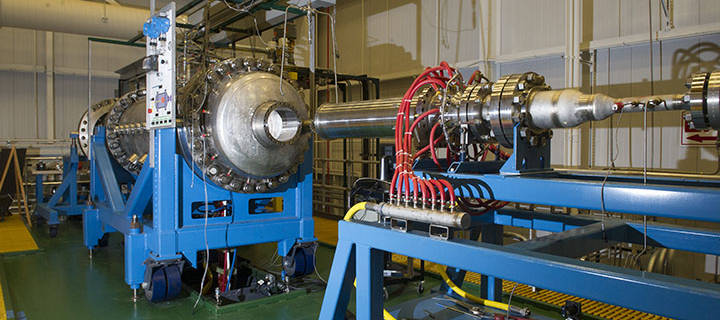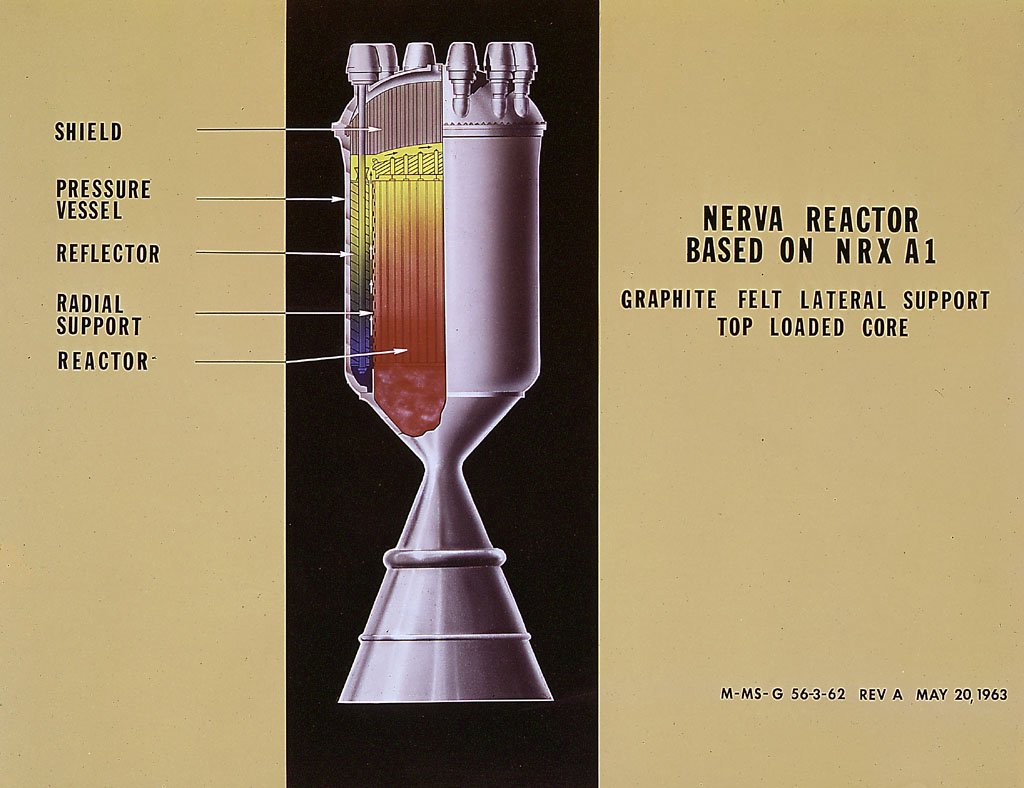Part of NASA's Game Changing Development (GCD) Programme, the $18.8m contract will see Virginia-based BWX Technology initiate the design of a reactor to power a nuclear thermal promotion (NTP) system for a future crewed mission to Mars. The project, which is expected to run through 2019 subject to Congressional approval, aims to develop a reactor fuelled by low enriched uranium; that is, with a uranium-235 concentration below 20 per cent.

NTP technology is seen as having great potential for long distance space exploration. It uses a nuclear reactor to heat an inert fuel — most likely to be liquid hydrogen — to high temperatures and expel it from a rocket nozzle.
Theoretically, an NTP engine can deliver twice the specific impulse of the best chemical rocket engine, with half of the liftoff mass: payload mass could therefore be doubled or tripled.
“That capability makes nuclear thermal propulsion ideal for delivering large, automated payloads to distant worlds,” NASA said.
Using an NTP engine for a Mars mission could cut the transit time from Earth from six months to four. This would reduce the crew’s exposure to both microgravity and to cosmic radiation, both of which have serious potential effects on health.
"As we push out into the solar system, nuclear propulsion may offer the only truly viable technology option to extend human reach to the surface of Mars and to worlds beyond," said Sonny Mitchell, Nuclear Thermal Propulsion project manager at the Marshall Space Centre in Huntsville, Alabama from where the project will be directed . "We're excited to be working on technologies that could open up deep space for human exploration."

NTP is not new to NASA; the agency had a long-running programme investigating and developing the technology from 1958 to 1972.
The NERVA (Nuclear Engine For Rocket Vehicle Application) project got as far as building and testing prototype engines with flight-certified components to the point where it was deemed ready for integration into a spacecraft, but Congress cancelled a planned Mars mission before this could happen and the engine was never flight-tested.
In the new project, BWXT is to develop and test a new type of low enriched uranium fuel element known as "Cermet" – ceramic metallic. Such materials are used in specialised industrial cutting equipment, but for NTP applications would require isotopically-pure tungsten, which is currently not possible to do affordably.
“BWXT is extremely pleased to be working with NASA on this exciting nuclear space program in support of the Mars mission,” said Rex D. Geveden, BWXT’s president and CEO. “We are uniquely qualified to design, develop and manufacture the reactor and fuel for a nuclear-powered spacecraft. This is an opportune time to pivot our capabilities into the space market where we see long-term growth opportunities in nuclear propulsion and nuclear surface power.”
The early stage of the project will first involve a feasibility study for the use of the fuel. It will then spend a year testing and refining its ability to produce full-size Cermet fuel elements which will be tested in a purpose-built facility at Marshall.
BWXT’s roots extend back to the earliest days of electrical power. Formerly part of Babcock Wilcox, its forerunners provided boilers for the first power stations in the US, and it was awarded the first contract to develop nuclear propulsion systems for submarines and surface ships in the 1940s. Its involvement in NTP dates back to 1987.




AI-generated medical responses need monitoring, study finds
This would negate most of the benefit of using AI in the first place, rather like the Locomotive Act 1865 that required any self-propelled road...